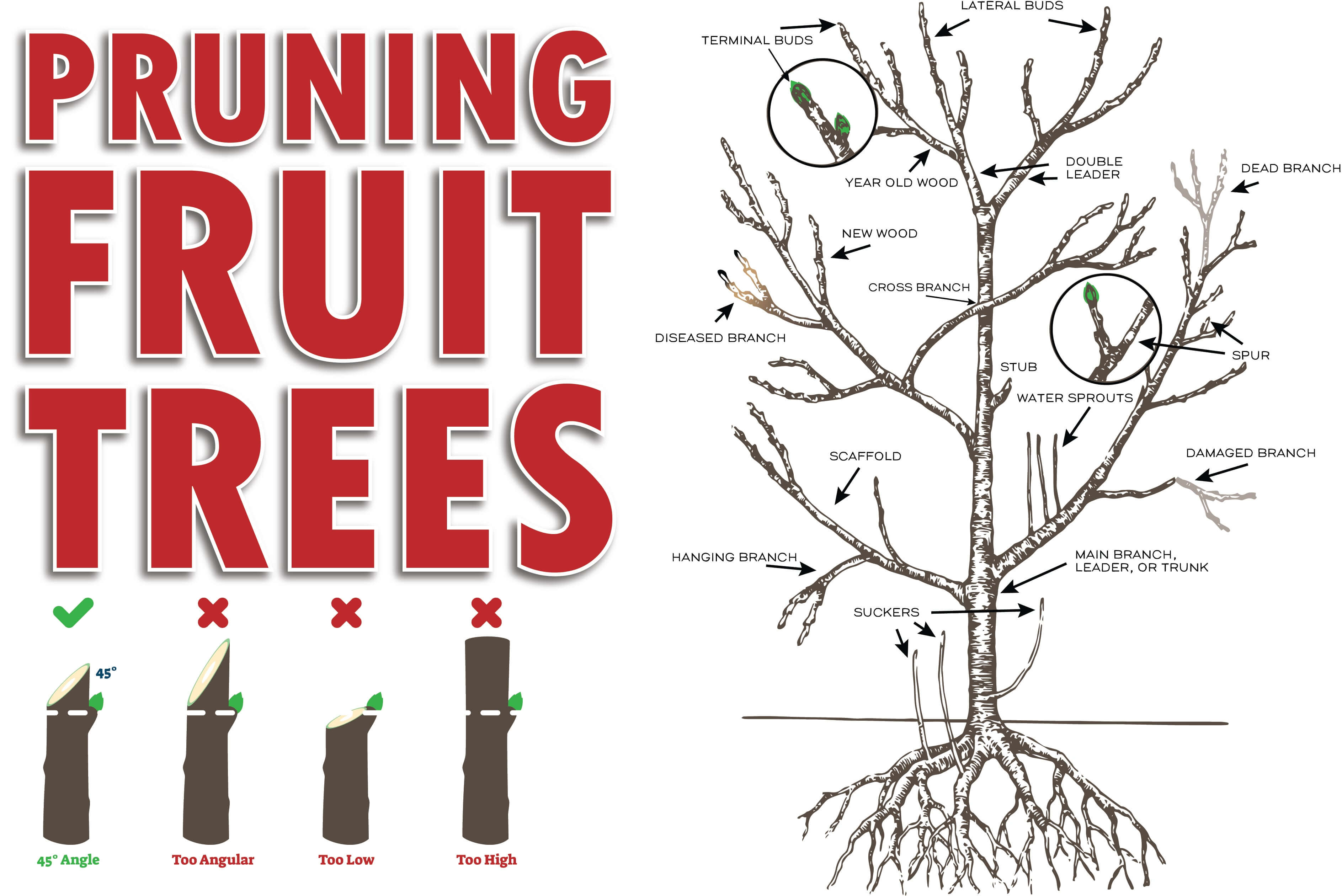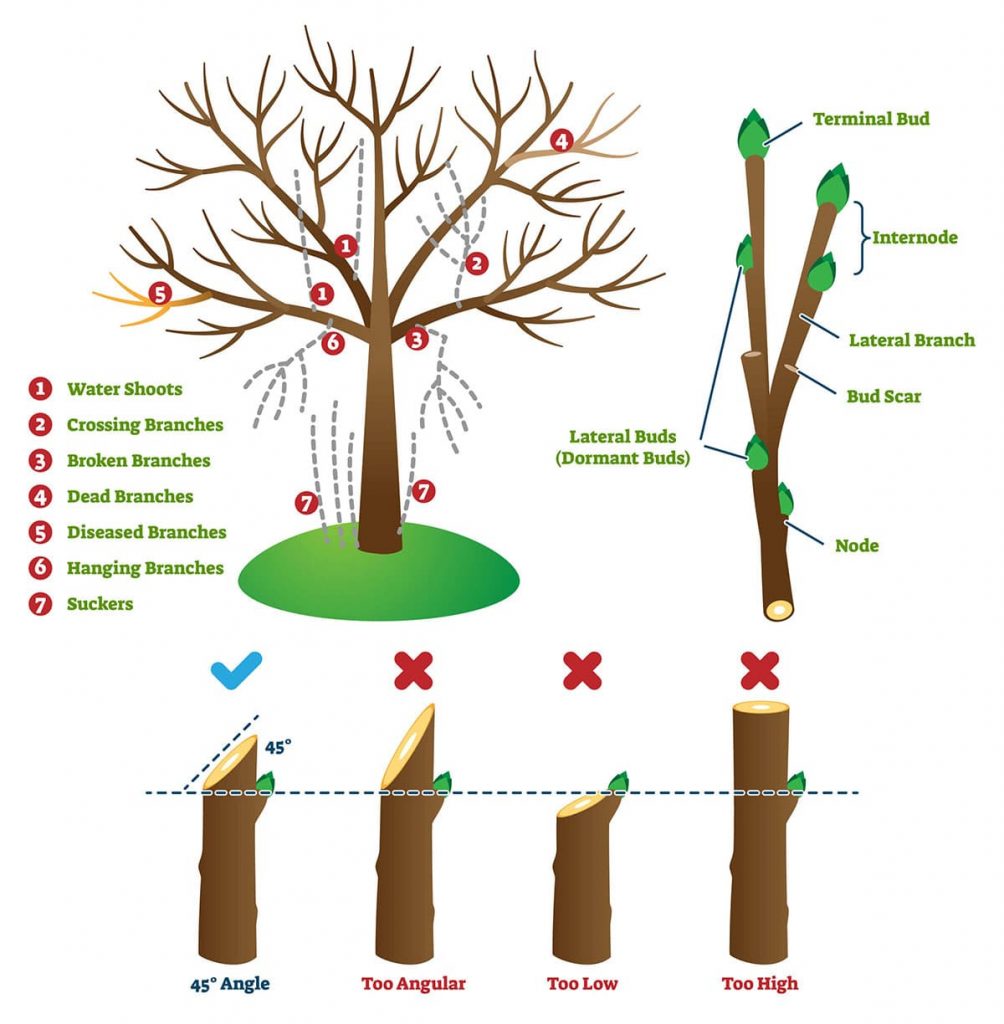Master Fruit Tree Pruning Techniques: Your Guide to Bountiful Harvests

Imagine walking through your lush garden, the sun warming your face, and the scent of ripe fruit filling the air. The secret to this idyllic scene? Mastering the art of pruning techniques for fruit trees and shrubs. Pruning is more than just cutting branches; it's a dance with nature, guiding your trees to grow stronger, healthier, and more productive. Let's dive into the world of fruit tree care and explore the pruning tips that will transform your garden into a verdant oasis.
Understanding the Basics of Fruit Tree Pruning
Before we delve into the specifics, let's understand why pruning is essential. Pruning techniques for fruit trees and shrubs are crucial for several reasons:
- Encouraging Fruit Production: Proper pruning directs the tree's energy into fruit production rather than excessive branch growth.
- Maintaining Tree Health: Removing diseased or damaged branches prevents the spread of infections.
- Improving Air Circulation: A well-pruned tree allows better airflow, reducing the risk of fungal diseases.
- Enhancing Sunlight Penetration: More sunlight means better photosynthesis, leading to healthier growth and sweeter fruits.
Essential Tools for Pruning
Just like a painter needs brushes, a gardener needs the right tools. Here are the essentials:
- Pruning Shears: For cutting branches up to 1.5 inches in diameter.
- Loppers: For branches up to 2.5 inches in diameter.
- Pruning Saw: For larger branches.
- Gloves: To protect your hands from thorns and sharp edges.
When to Prune Fruit Trees
Timing is everything in pruning. The best time to prune most fruit trees is during late winter or early spring, just before new growth begins. This is when the tree is dormant, making it easier to see the structure and reducing the risk of disease.
Pruning Techniques for Different Fruit Trees
Apple and Pear Trees
Apple and pear trees benefit from a central leader system, where one main trunk (the leader) is allowed to grow taller than the rest of the tree. Here's how to prune them:
- Remove Dead or Diseased Branches: Start by cutting away any branches that are dead, diseased, or damaged.
- Create an Open Center: Remove any branches that cross or rub against each other. This improves air circulation and sunlight penetration.
- Encourage Outward Growth: Prune branches that grow inward or downward. This helps maintain the tree's shape and prevents overcrowding.
Stone Fruit Trees (Peach, Plum, Cherry)
Stone fruit trees prefer an open center system, where the center of the tree is kept open to allow sunlight and air to reach the inner branches.
- Remove Suckers: These are vertical shoots that grow from the base of the tree. They steal nutrients from the fruit-bearing branches.
- Thin Out Branches: Remove about one-third of the previous year's growth to encourage new, fruitful branches.
- Maintain the Open Center: Keep the center of the tree free of branches to allow sunlight and air to penetrate.
Pruning Tips for Shrub Maintenance
Shrubs, like fruit trees, benefit from regular pruning. The goal is to maintain a compact, bushy shape that encourages flowering and fruiting.
- Remove Dead or Diseased Branches: Just like with trees, start by removing any unhealthy branches.
- Shape the Shrub: Prune to maintain the desired shape. For most shrubs, this means a rounded or mounded form.
- Encourage New Growth: Cut back old, woody branches to encourage new, vigorous growth.
Advanced Pruning Techniques
For those looking to take their pruning skills to the next level, consider these advanced techniques:
Espalier
Espalier is the art of training a tree to grow flat against a wall or fence. It's a beautiful way to maximize space and create a living sculpture.
- Choose the Right Tree: Apple and pear trees are excellent choices for espalier.
- Create a Framework: Use wires or a trellis to guide the branches into the desired shape.
- Prune Regularly: Keep the tree flat by pruning any branches that grow outward.
Pollarding
Pollarding involves cutting back the main branches to the same point each year, creating a dense head of foliage and fruit.
- Start Early: Pollarding is best started when the tree is young.
- Cut Back Hard: Each year, cut the new growth back to the same point on the main branches.
- Maintain Regularly: Pollarding requires annual maintenance to keep the tree in shape.
Common Mistakes to Avoid
Even the most experienced gardeners make mistakes. Here are some common pitfalls to avoid:
- Over-Pruning: Removing too many branches can weaken the tree and reduce fruit production.
- Under-Pruning: Not pruning enough can lead to overcrowding and disease.
- Pruning at the Wrong Time: Pruning at the wrong time of year can stress the tree and reduce its vigor.
Conclusion: Embrace the Art of Pruning
Pruning techniques for fruit trees and shrubs are not just about cutting branches; they're about nurturing growth, encouraging health, and maximizing fruit production. By understanding the basics and applying the right techniques, you can transform your garden into a thriving oasis. So, grab your pruning shears and let's get started!
FAQs
When is the best time to prune fruit trees?
- The best time to prune most fruit trees is during late winter or early spring, just before new growth begins.
What is the difference between a central leader system and an open center system?
- A central leader system has one main trunk that grows taller than the rest of the tree. An open center system keeps the center of the tree open to allow sunlight and air to reach the inner branches.
How do I know if a branch is dead?
- Dead branches often have no leaves, are dry and brittle, and may have peeling bark. They also don't produce new growth in the spring.
Can I prune my fruit trees in the fall?
- While it's possible, fall pruning can stimulate new growth that may not have time to harden off before winter, making the tree more susceptible to cold damage.
What should I do with the branches I cut off?
- You can compost small branches or use them as mulch. Larger branches can be chipped for mulch or used as firewood, depending on the type of tree.


For more detailed information on fruit tree care, you can visit the University of California's Agriculture and Natural Resources website, which offers a wealth of resources on fruit tree cultivation and maintenance. Additionally, the Royal Horticultural Society provides excellent guides on pruning techniques for various types of fruit trees and shrubs.
0 Response to "Master Fruit Tree Pruning Techniques: Your Guide to Bountiful Harvests"
Post a Comment